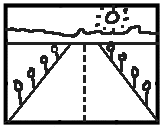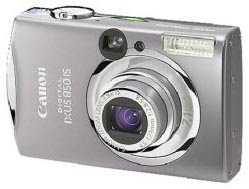 My main reason for the purchase was so that I could take it to the likes of PubStandards and BarCamp, or other conferences, as a lightweight and small alternative to my EOS 350D SLR. Lovely though that is, when I'm out using it on a "proper" photographic day out, I was finding I often left it at home (or took it reluctantly) to such events.
My main reason for the purchase was so that I could take it to the likes of PubStandards and BarCamp, or other conferences, as a lightweight and small alternative to my EOS 350D SLR. Lovely though that is, when I'm out using it on a "proper" photographic day out, I was finding I often left it at home (or took it reluctantly) to such events.The other side of the coin was the perennial problem - I wanted a camera which had a high enough technical spec that when I did see an impromptu picture of the more "arty" variety, it would be up to the job of recording the scene in enough detail so I would not be cursing not having the "proper" SLR with me. So I've been on the fence for ages, waiting for something to tip me off. Cue the IXUS 850.
It allows me to take manual control of things like the flash, (on, off, auto and even slow-sync mode); white balance, and most importantly, ISO speed. It has a decent zoom range, about 28-105mm equivalent in 35mm terms - which is fine for indoor subjects where I'm most likely to use it.
Most of the pictures I got at last week's PubStandards XV were a bit grainy and dark - I turned the ISO up to 1600 as I didn't want to use flash very much (you just get the rabbit-in-headlights look), but the ambient lighting was not very bright. As such, some were a tad disappointing, but to be honest, I think any camera would have struggled.
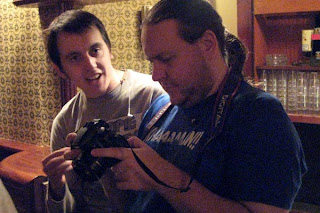 [grainy stuff with the flash off and ISO1600 selected]
[grainy stuff with the flash off and ISO1600 selected]I also did a few with flash, and these were generally better:
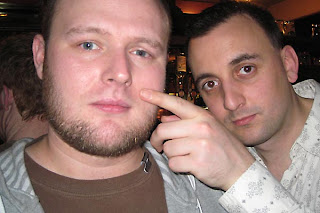 [ISO turned down to 400 and a bit of flash - fine for most party/pub situations]
[ISO turned down to 400 and a bit of flash - fine for most party/pub situations]So much for small venues - how would it cope with the prospect of a larger auditorium? Well, I'm happy to report that it's performance at BarCamp was very impressive. Again, most of the time I left the flash off and was running at ISO 800/1600, but the ambient lighting was much better and so I got some nice coloured lighting and natural looking shots without the flash burnout and colour washout that can occur.
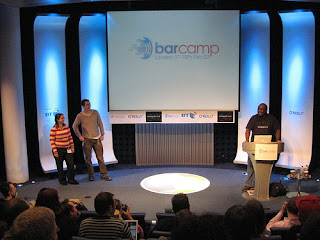 [ISO at about 800, taken from the back of the auditorium]
[ISO at about 800, taken from the back of the auditorium]Admittedly, the auditorium wasn't as big as some conference rooms, and there was a great rake to the seating so everyone was pretty near and got a great view.
Later on (much later, I think this one was taken around 2:30am), we were playing Werewolf and I experimented using the Slow-sync flash option. This sets the camera shutter speed to something like 1/15th or 1/20th, and fires a less powerful burst of flash, which balances the ambient lighting with a bit of highlight pickup.
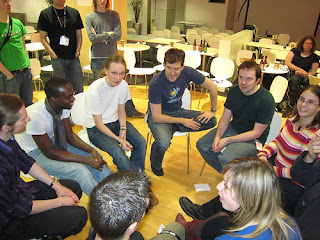 [ISO at about 800, and a burst of slow-sync flash]
[ISO at about 800, and a burst of slow-sync flash]I haven't really taken many photos with the camera out of doors (I don't get out much!), but I did spot this scene whilst waiting for a train the other morning:
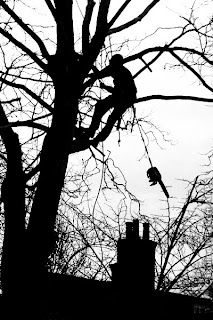 [ISO at about 200, looking towards the light (overcast clouds)]
[ISO at about 200, looking towards the light (overcast clouds)]The tree surgeon was hacking bits off a tree 30 feet in the air. The swinging chainsaw was still running... I did a bit of Photoshop tweakery afterwards to get a better B&W silhouette.













